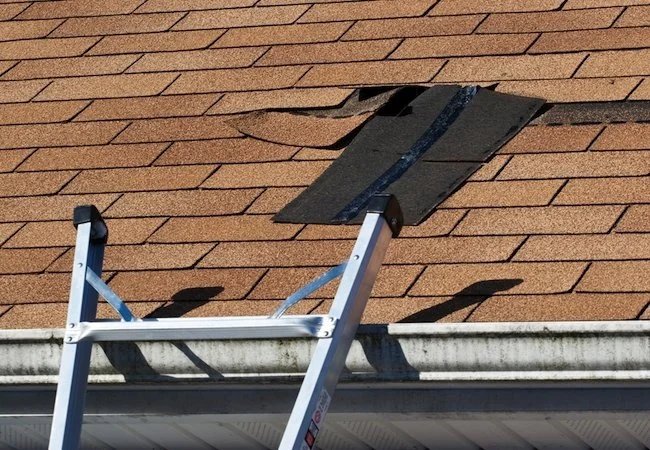We may earn revenue from the products available on this page and participate in affiliate programs. Learn More ›
Asphalt shingles are the most popular roofing material for homes today, accounting for nearly 70 percent of domestic roofing installations, according to Tom Bollnow, senior director of technical services at the National Roofing Contractors Association (NRCA). And for good reason: Asphalt shingles are lightweight, durable, attractive, and priced well compared to competitive roofing materials.
While most asphalt shingles are manufactured with the latest advancements in weather- and wind-resistance, fire safety, and long-lasting performance, even the best of them can develop problems over time. The good news is that an asphalt shingle roof is probably the easiest type to repair, since curled shingles can be flattened and re-secured, and old shingles can simply be replaced. Plus, asphalt shingles make the warning signs of a serious roofing problem readily perceptible. Follow the four steps to repairing a leaky roof outlined ahead, and you may find your problem short-lived.
1. Find the roof leak.
If you discover that your roof is leaking—most likely evident by water stains on the ceiling—note the leak’s location, then go outside with a good pair of binoculars to find the roof leak. Look to see if there are any curled, cracked, or missing shingles. Leaks can occur at any point where shingles butt, or where caulking and flashing have been compromised. End caps, the tent-shaped shingles that cover the angular peaks of the roof, can also be the source of leaks, so check those as well.

2. Secure curled shingles.
Curled-back shingles, for example, can be re-secured by brushing on a coating of asphalt roofing cement or finding its equivalent compound in tubes for use with a caulk gun (like Henry Rubberized Wet Patch, available in a 10.1-ounce cartridge at The Home Depot). When repairing a leaky roof, you’ll want to apply a generous amount of roofing cement to the underside of the shingle to make certain that the edge and corners are secured. Then press firmly to set.
Note: Shingles will be more pliable in warm weather than when it’s cold, so consider that factor when resolving problems.
3. Replace damaged or missing shingles.
If shingles are cracked, missing, or rotten, replacing them may be another simple fix for repairing a leaky roof (provided you have the replacement shingles). To remove a damaged shingle, lift the edges of the surrounding shingles and carefully remove nails with a pry bar. Once the nails are removed, the shingle should slide out. Scrape away any of the residue cement from the roof and level or remove protruding nails.
Before you attempt to replace a new shingle, round the back corners with a utility knife. This will make it easier for you to slide the shingle under the one above and align it with those on either side. Once you have it in position, lift the corners of the overlapping shingles and fasten the top of the new replacement with 6d galvanized roofing nails (like these 2-inch options from The Home Depot). Be sure to secure with nails in each corner. Last, cover the nail heads with roof cement and smooth down the overlapping shingle edges.

4. Fix flashing.
To repair leaks caused by metal flashing around chimneys and dormers, simply reseal joints using a caulk gun filled with roofing cement. If you see damage to joints previously sealed with a line of roof cement, apply a fresh new coat with a putty knife.
If it’s necessary to replace an entire row of shingles, or if you find that shingles lift off from the roof too easily, it may be time to call in a professional roofer to inspect the situation. Spot repairs will not extend the life of a roof in need of replacement.

